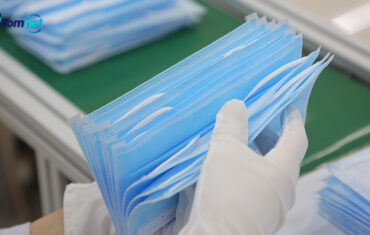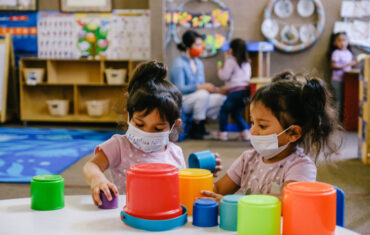Face shields come in various forms, but all provide a clear plastic barrier that covers the face. For optimal protection, the shield should extend below the chin anteriorly, to the ears laterally. And there should be no exposed gap between the forehead and the shield’s headpiece. Shields require no special materials for fabrication and production lines can be repurposed fairly rapidly. People can make these shields from materials found in craft or office supply stores. Thus, availability of face shields is currently greater than that of face masks.
Advantages
Face shields offer a number of advantages. Face masks have limited durability and little potential for reprocessing. However, people can reuse the shields indefinitely and clean with soap and water, or common household disinfectants. They are comfortable to wear, protect the portals of viral entry. They can prevent the wearer from touching their face. People wearing face masks often have to remove them to communicate with others around them. This is not necessary with face shield. The use of a shield is also a reminder to maintain social distancing. But it allows visibility of facial expressions and lip movements for speech perception. Most important, face shields appear to significantly reduce the amount of inhalation exposure to influenza virus, another droplet-spread respiratory virus.
Face Shields keep healthcare workers safe
Face shields limit aerosol and splatter exposure from the front, protecting a broader area of the face compared to standard safety goggles or glasses, while providing top ventilation. By reducing aerosol and splatter exposure on N95 and other face masks that cover the mouth and nose, shields also allow healthcare workers to wear those masks longer. These products consist of a transparent shield, a horseshoe-shaped strip of plastic that serves as the frame of the shield, and an elastic band to wrap around the head.
The innovative 3D-printed face shield offers a number of advantages over traditional shields. Shields are one of the most popular applications of 3D printing to create PPE. In addition to helping providers feel physically safe, they also offer emotional and psychological benefits. This because they felt safer and more confident working during the COVID crisis. Inspired by the positive feedback, production was ramped up.
Summary
The COVID-19 pandemic arrived swiftly and found many countries unprepared. To minimize the medical and economic consequences, it is important to rapidly assess and adopt a containment intervention bundle that drives transmissibility to manageable levels. Face shields can be quickly and affordably produced and distributed. They should be included as part of strategies to safely and significantly reduce transmission in the community setting. Now is the time for adoption of this practical intervention.






